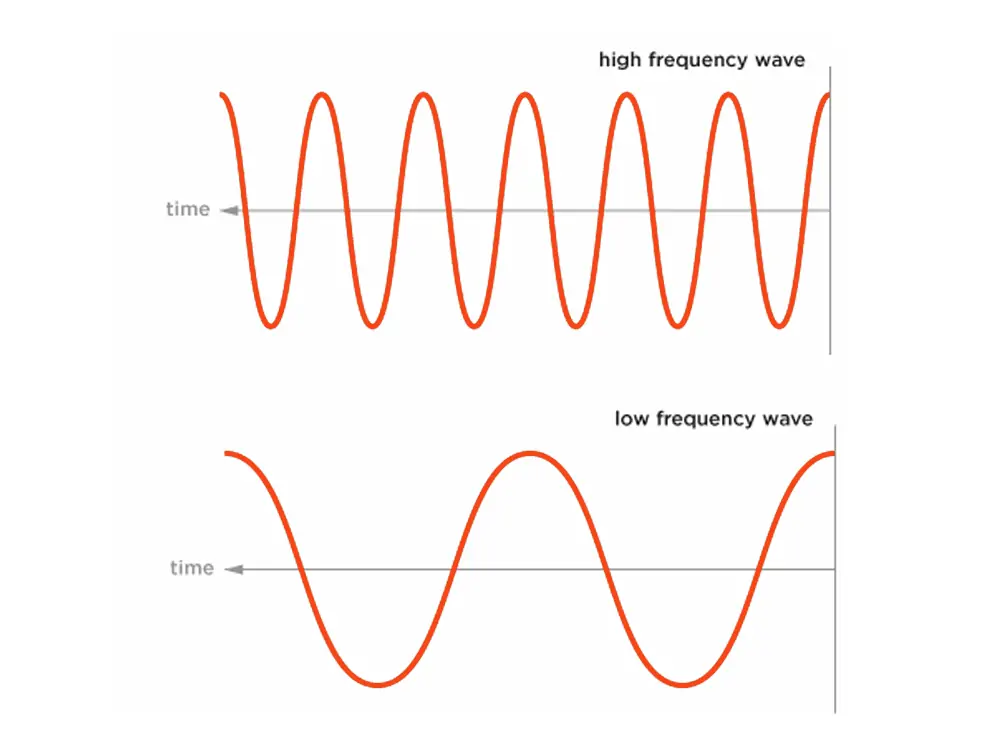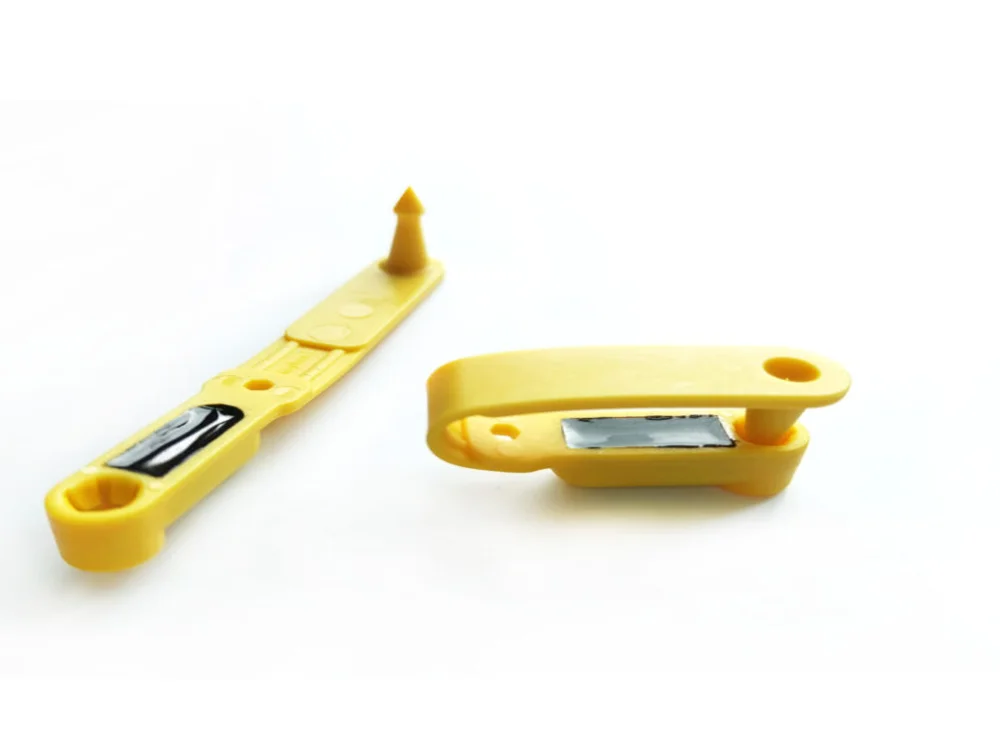RFID technology has been integral to industries and supply chains for years. These systems provide visibility into operations and enable users to track assets. High-frequency and low-frequency systems were the initial two categories of RFID. These two led the market before the advent of UHF technology. Competing with one another, they continue to hold significant positions in many markets. Who will prevail in a high frequency VS low frequency RFID system will be the focus of today’s discussion.
Introduction to High and Low Frequency Systems
RFID systems come in various varieties, each functioning at a different range of radio frequencies. Four distinct categories of such systems can be distinguished by their frequency. But our attention will be directed only towards two of them today: low-frequency and high-frequency.
What Is High Frequency (HF) RFID?
HF RFID, which stands for High-frequency RFID, is the most prevalent RFID technology. It has reduced read ranges of up to 1 foot. This enables it to be utilized in various applications, including access control, document tracking, and ticketing. These systems function at a high frequency in comparison to LF systems. Most HF RFID systems function at 13.56 MHz, within the HF frequency band, which extends from 3 MHz to 30 MHz.
What Is Low Frequency (LF) RFID?
Low-frequency RFID, or LF RFID, is a specialized RFID technology used in livestock monitoring and access control. It provides limited read ranges of no more than 10 cm and operates at low power but with a strong signal. LF RFID systems operate 125 KHz on average and 134 KHz on the extreme ends of the 30 KHz to 300 KHz frequency range. The global applicability of the LF spectrum is limited due to minor variations in power levels and frequency across different regions.
Their low frequency allows them to communicate in metal and liquid states with minimal disruption. This makes them less susceptible to signal deprivation and detuning than high-frequency tags.
High Frequency VS Low-Frequency RFID Systems: What Is the Difference?

By now, you have a basic understanding of high-frequency and low-frequency RFID systems. Yet, you’ll gain a more comprehensive understanding. So, let’s explore their distinct performance metrics further. This will enlighten you and equip you with the knowledge to make an informed decision for your specific needs.
Data Transfer Rate
The data transfer rate is another factor when comparing high frequency versus low frequency. Frequency is proportional to data transmission speed if you were unaware. This is an accepted principle in wireless communication. Thus, let’s try to comprehend the reason for that. These systems use binary notation. These also contain the digits “0” and “1“ to send data. The number of waveforms per second defines the frequency of the RFID tag signal. Moreover, every waveform corresponds to a single byte of data (0 or 1).
This shows that an increase in a signal’s frequency corresponds to a rise in the amount of data it can send. Regardless of their frequency, all radio signals travel at an identical speed. Signals possessing greater data-carrying capacity will send information more fast.
The difference in transfer rates between LF and HF systems is enormous. Low-frequency RFID systems transfer information at a rate of 10 kilobits per second. Furthermore, HF systems are capable of getting transmission rates of up to 424 kilobits per second.
Operational Frequency
As mentioned before, these two systems function within distinct frequency ranges. Despite this, their frequency bandwidth is greater than that stated before. Low frequency pertains to any system functioning within the frequency range of 30 kHz to 30 kHz. High-frequency systems operate using radio signals within the frequency range of 3 MHz to 30 MHz.
The standards established for a specific location cause these standards to vary. But it is dependent on the region in which you find yourself. For a system to function, every part must start operation at the same frequency.
Programmability
The programmability of an RFID system is crucial element that influences its value. An RFID tag frequency consists of a microchip. Also, it contains substrate featuring an antenna. The device can store data that readers can access.
LF tags have read-only memory, so users cannot reprogram them with new data. In contrast, HF tags are equipped with a Read/Write memory. So, it is possible to store new information within an NFC reader.
This characteristic restricts most LF tags to a single item. However, HF tags’ Read/Write capability makes them applicable to various items.
Tag Form Factor
The form and functionality of the identifiers are referred to as their form factor. Smart Cards, Key Fobs, Disks, and Labels are the most frequent uses for these tags. Inlays, plastic ear tags, and embeddable bioglass tags (used for animal tracking) are more types of low-frequency tags. Hard frequency tags, built from premium ABS plastic, are also available.
Communication/Read Range
A multitude of factors can influence the communication range of an RF system. One of the most significant determinants is the operational frequency. Higher-frequency signals have more energy because their power input increases with their frequency. These signals can thus travel a greater distance. HF and LF signals have a limited range of communication compared to other systems. The maximum read range of a low-frequency RFID tag is 6 inches. However, the maximum read range of high-frequency tags is 12 inches from the antenna.
Vulnerability to Environment
RFID systems transmit data via radio signals. Signal degradation and distortion are concerns that every wireless communication system must address. Regarding RF systems, liquids and metals present the most significant challenges. Metals alter the RFID frequency of the signal and obstruct the proper operation of a tag. The operating frequency of an antenna is proportional to its magnitude. This is due to the antenna length being proportional to signal wavelength.
Moreover, a tag’s antenna and a metal surface are in contact. Thus, the metal surface itself begins to function as an antenna. This results in the antenna of the tag tuning to a frequency lower than the rest of the system. Water is an excellent electrical conductor. Also, it disperses a radio signal upon contact with it. This occurs due to the energy-intensive fluctuation of charges.
The radio wave must undergo to maintain motion. So, as the frequency increases, the energy need for the wave to propagate through the water. Due to low frequency, they experience minimal disruption when communicating in metal and liquid states. However, high-frequency tags are more susceptible to signal degradation and detuning. The high-frequency tags can function well in such conditions.
Applications of Low Frequency and High Frequency

Now, you get most of the info needed to distinguish between various RFID systems. Low-frequency systems are more suited for specific applications due to these distinctions. High-frequency systems applications include:
- IoT Automation
- Ticketing
- Authentication
- Payments
- Library Book Tracking
Organizations use low-frequency RFID systems for various purposes. These include livestock and animal tracking, access control, automotive regulation, and healthcare.
Conclusion
High-frequency RFID technology differs from low-frequency RFID. Real-world applications follow operational frequency, as the term implies. In contrast, both of these have experienced a decline since the advent of UHF technology. Still, their cost-effectiveness and resistance metals and substances render them a viable contender. One may be more suitable for a specific user than the other. Also, it is contingent upon the industry and application. Due to their diminished cost, LF is ideal, for instance, for small-scale operations. In applications with a high volume of items, HF tags are preferred by the majority of users. Also, it has a faster data transfer rate than other types.
